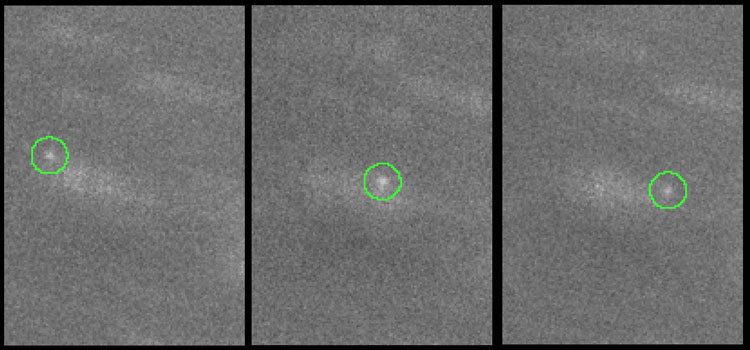Semi-major axis 16.611 Gm Inclination 112.712° Mean diameter 62 km Orbits Neptune | Eccentricity 0.2646 Orbital period 1879.08 d
(5.14 a) Discovered 10 August 2002 | |
 | ||
Discovered by M. Holman
J. J. Kavelaars
T. Grav, W. Fraser
D. Milisavljevic Discoverers Dan Milisavljevic, John J. Kavelaars, Matthew J. Holman Similar John J Kavelaars discoveries, Neptune moons, Other celestial objects | ||
Halimede (/ˈhælᵻˈmiːdiː/ HAL-i-MEE-dee; Greek: Αλιμήδη), or Neptune IX, is a retrograde irregular satellite of Neptune. It was discovered by Matthew J. Holman, John J. Kavelaars, Tommy Grav, Wesley C. Fraser and Dan Milisavljevic on August 14, 2002.
Halimede has the second most eccentric and third most inclined orbit around Neptune. This is illustrated on the diagram in relation to other irregular satellites of Neptune. The satellites above the horizontal axis are prograde, the satellites beneath it are retrograde. The yellow segments extend from the pericentre to the apocentre, showing the eccentricity.
Halimede is about 62 kilometers in diameter (assuming an albedo of 0.04) and appears neutral (grey) in the visible light. Given the very similar colour of the satellite to that of Nereid together with the high probability (41%) of collision in the past lifespan of the Solar System, it has been suggested that the satellite could be a fragment of Nereid.
Halimede like many of the outer satellites of Neptune, is named after one of the Nereids, the fifty daughters of Nereus and Doris. Before the announcement of its name on February 3, 2007 (IAUC 8802), Halimede was known by the provisional designation S/2002 N 1.
